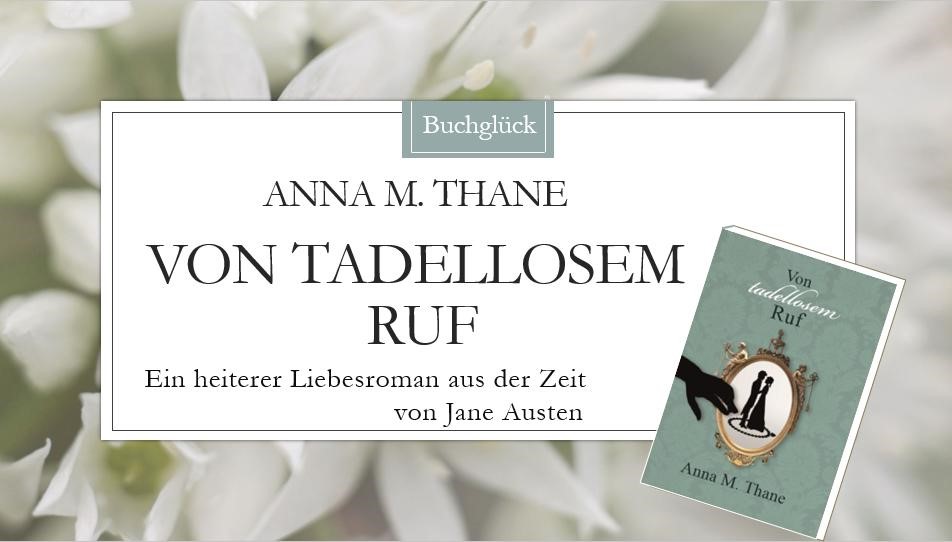In the Romantic Age modern medical treatment was still in the fledgling stages. The modern era of medicine began with Edward Jenner’s discovery of the smallpox vaccine at the end of the 18th century. It would take nearly another 100 years until Robert Koch discovered the transmission of diseases by bacteria. Penicillin and Aspirin became reliable drugs only in the early 20th century.
Medical treatment was based on herbalism or the ancient Greek theory of “humourism” of the body. Humourism proposed that a body was in good health when its four humours were in balance. These humours were blood, phlegm, black bile and yellow bile. An imbalance of the humours would cause ill health.
If you fell ill in the Romantic Age, what medical treatment could you expect?
Bloodletting – the All-Purpose Method
Many illnesses were believed to be caused by an excess of the humour “blood”, i.e. too much blood in the body. The balance of the humours was supposed to be restored by bloodletting.
 Ailment: Inflammation of the skin, fever
Ailment: Inflammation of the skin, fever
Treatment: Applying a leech
Leeches were the method of choice for bloodletting since ancient times. Leech collectors gathered the species from muddy lakes and sold them to apothecaries, where the leeches were kept in performated leech jars (see photo on the right).
A patient would buy leeches at the apothecary and take them home for treatment, i.e. applying the leech to the skin. The leech would suck blood until fed up and then drop off.
The use of leeches was so widespread that leeches had nearly died out by the early 19th century.
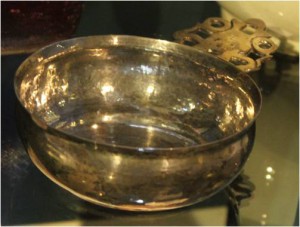 Ailment: Apoplexy, headache
Ailment: Apoplexy, headache
Treatment: ‘Breathing a vein’
The patient’s arm would be tied to make the vein swell. It would then be cut and a certain amount of blood drained out. The blood was collected in a bleeding bowl (see photo on the left).
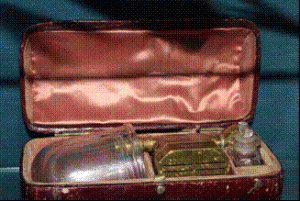 Ailment: Rheumatism, pain, disease of internal organs
Ailment: Rheumatism, pain, disease of internal organs
Treatment: Cupping
The patient’s skin was scraped with a knife. Then, a warmed, dome-shaped glass cup would be placed above the incision. This would create a vacuum causing blood to emerge from the wound. The photo on the left shows a cupping set.
Remedies from the Medicine Chest
The medicine chest (see photo below) mainly contained medical herbs and homespun remedies. Today, some of the remedies are considered as either non-effective or dangerous. Others are still in use. Here is a selection of common remedies of the Romantic Age:
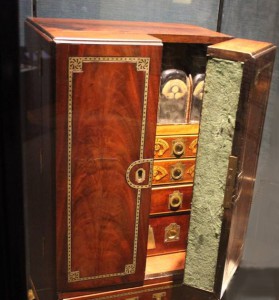 Ailment: Constipation
Ailment: Constipation
Treatments:
- A tincture of powdered root of Turkey rhubarb mixed with peppermint water
- Cream of tartar, a by-product of winemaking which was also used for baking. The internal use of cream of tartar is dangerous: It may lead to an elevated concentration of the electrolyte potassium in the blood
- Castor Oil – still popular today
- Manna: A sugary extract from the sap of the ash tree
- Epsom salts: A salt from a bitter saline spring in Epsom, Surrey. Epsom salt is today known as Magnesium sulfate
Ailment: Depression, languor
Treatment: Ingesting a teaspoonful of ‘spirit of lavender’, lavender oil in an alcohol base
Ailment: Diarrhoea, flatulence and vomiting
Treatment: Peppermint water
Ailment: Fainting
Treatment: Salt of hartshorn dissolved with perfume in vinegar or alcohol, to be held under the patient’s nose
Ailment: Fever
Treatment: Bark powder, from the bark of the Cinchona tree
Ailment: Gout
Treatments:
- Tincture of onion juice and vinegar, heated and applied to the aching body part
- Laudanum, a tincture of opium, to ease the pain.
Ailment: Abdominal fullness, heartburn, nausea, belching
Treatment: Ingesting a tincture of double-distilled cardamom. Cardamom indeed contains substances that appear to treat stomach and intestinal spasms, and increase the movement of food through the intestine.
Ailment: the ‘vapours’, nervous breakdown
Treatment: Laudanum, a tincture of opium
Remedies against the Common Cold
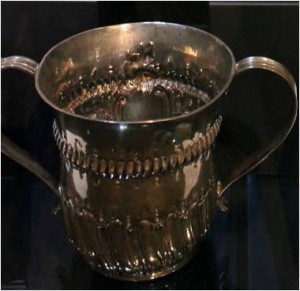 Common colds are bothersome. In the Romantic Age with its deficiencies in sanitation the body weakened by the cold was more receptive to bacterial infections, e. g. bacteria causing lung inflammation. Lung inflammations are treated with antibiotics today – not yet an option then.
Common colds are bothersome. In the Romantic Age with its deficiencies in sanitation the body weakened by the cold was more receptive to bacterial infections, e. g. bacteria causing lung inflammation. Lung inflammations are treated with antibiotics today – not yet an option then.
Traditional treatments against the common cold were:
- A mustard bath. It was believed to draw out toxins and warm the muscles, blood and body.
- A posset, i. e. a hot drink made of milk, egg and alcohol such as sherry or ale, served in a posset pot (see photo on the left). The posset was a restorative, and it would help the patient to fall asleep.
Being sick in the Romantic Age was risky. There was a good chance that the medical treatment made the ailment worse: Bloodletting further weakens an already weak patient. Using Laudanum leads to an opium-addiction. The wrong doses of medicines such as cream of tartar can kill the patient.
Time travellers are well advised to sneak-in their 21st century medication when visiting the Romantic Age.
Sources
- Science Museum, Gallery: “Journeys Through Medicine”, Exhibition Rd, London SW7 2DD, UK
- Science Museum: Brought to Life: Exploring the History of Medicine.
http://www.sciencemuseum.org.uk/broughttolife.aspx - Greenstone, Gerry (MD): “The history of bloodletting”; in: British Columbia Medical Journal, Vol. 52, No. 1, January, February 2010.
http://bcmj.org/premise/history-bloodletting - Osborn, Sally: “Gout Gets Even”; in: History Today, Volume 64, 4 April 2014.
http://www.historytoday.com/sally-osborn/gout-gets-even#sthash.dkT1TZ5h.4GYFGonu.dpuf - Enoch, Nick: “Turkey rhubarb with a dash of laudanum, anyone? Medicine chest ‘time capsule’ that reveals the exotic potions used by doctors in 1817 goes on sale”; in: www.dailymail.co.uk, 25 June 2012.
http://www.dailymail.co.uk/news/article-2164411/19th-century-medicine-chest-time-capsule-1817-containing-dozens-exotic-potions-goes-sale.html#ixzz3tRe5iKZo
Article by Anna M. Thane, author of the novel
“Von tadellosem Ruf” (http://amzn.to/2TXvrez)
